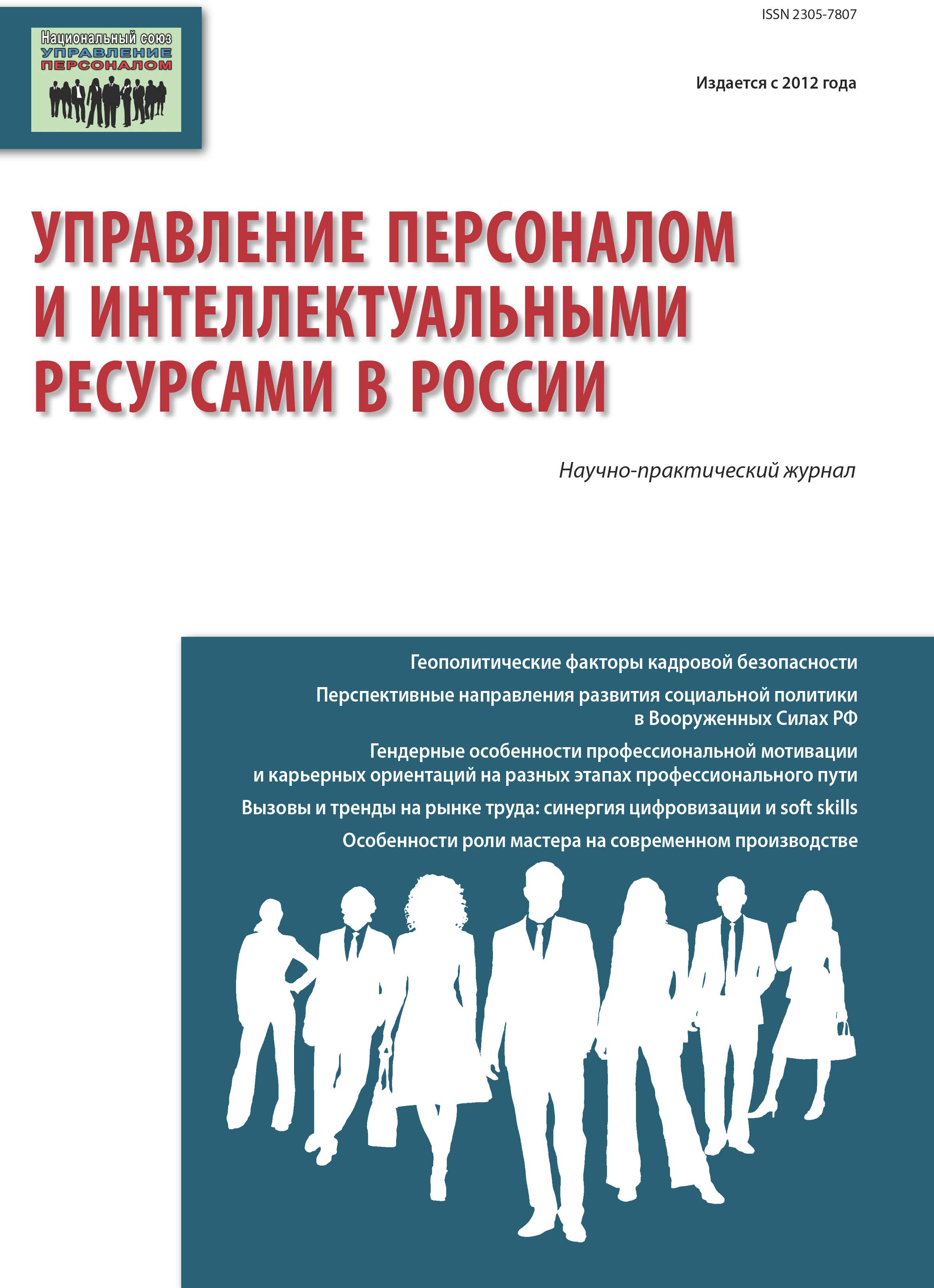Ural State University of Economics (epartment of Labor Economics and Human Resources Management, Associate Professor)
Russian Federation
Ural State University of Economics (Department of Labor Economics and Human Resources Management, Associate Professor)
Modern conditions for the functioning of organizations require constant updating of approaches to personnel management, including new approaches are being formed in relation to the management of personnel motivation. Despite the unification of job duties by professional affiliation, each employee is individual and his needs, principles, beliefs are individual, and this should be considered when working with personnel. When forming a system of motivation and incentives, one should consider the specifics of each working generation in the organization. Theories of generations substantiate the important characterizing qualities of generations, their features, and the influence of historical and socio-economic factors during the formation of each generation separately. The authors, when assessing the existing system of motivation of the personnel of a construction organization, took the theory of generations as a criterion basis. Improving the system of motivation and incentives in the context of the theory of generations makes it possible for the organization to contribute to the growth of the efficiency of the work of personnel, reduce turnover and reduce the costs associated with training and adaptation of personnel. The results of the work can be used as the basis for improving the systems of motivation of the personnel of construction organizations. It is possible to use the results of the study in the development of motivation systems for business entities, departments for personnel management of enterprises and organizations.
personnel management, motivation, theory of generations, labor stimulation, labor efficiency
1. Dolyatovsky, V. A. Methods of selection and optimization of personnel motivation strategy / V. A. Dolyatovsky, M. V. Grechko // National interests: priorities and security. - 2019. - T. 15. - No. 2 (371). - S. 225-239. - DOIhttps://doi.org/10.24891/ni.15.2.225. - EDN VTMPJI.
2. Efremova, A. A. Factors and ways of increasing labor productivity [Electronic resource] / A. A. Efremova // Kiberleninka. - Access mode: https://cyberleninka.ru/article/n/faktory-i-puti-povysheniya-proizvoditelnosti-truda/.
3. Iskenderov T.Z.O., Rzhanova I.E., Mitrofanova E.A. Study of the possibilities of using foreign experience in the formation of the Russian model of personnel motivation // Management of personnel and intellectual resources in Russia. 2020. V. 9. No. 6. S. 22-26. DOI: https://doi.org/10.12737/2305-7807-2021-22-26; EDN: https://elibrary.ru/YEJVEG
4. Kaverin, S.B. Labor motivation / S.B. Kaverin. M.: Institute of Psychology of the Russian Academy of Sciences, 2018. - 224 p.
5. Mitrofanova A.E., Manvelyan G.A. Motivation and incentives as the main tool for retaining personnel in an organization // Personnel and intellectual resources management in Russia. 2021. V. 10. No. 1. S. 24-29. DOI: https://doi.org/10.12737/2305-7807-2021-10-1-24-29; EDN: https://elibrary.ru/DUVQBB
6. Maslow A. Motivation and Personality. - New York: Harper and Row, 2018. - 97 p. 27 Forsyth P. Motivating Your Staff [Positive Staff Motivation] / P. Forsyth // Engineering Management. - 2019. - Vol. 16, Issue 1. - P. 22-23.
7. Vroom V.H. Work and motivation. New York: Wiley, - 2019. - 331 p. 48.
8. Kopelman R.E. Douglas McGregor's Theory X and Y: Toward a Constructvalid Measure / R.E. Kopelman, D.J. Prottas, A.L. Davis // Journal of Managerial Issues. - Vol. 20, No 2, 2020. - P. 257-259
9. How Generation Y Works. HowStuffWorks, MICHAEL FRANCO, 2018. URL: https://people.howstuffworks.com/culturetraditions/generation-gaps/generation-y2.htm.
10. Hjelle L., Ziegler D. Personality Theories: Basic Assumptions, Research, and Applications 3th ed.: McGrow-Hill, 2018. - 603 p. 52.
11. Vital Strategies to Use When Marketing to Generation Z. Oberlo, Tom Law, 2018. URL: https://www.oberlo.com/blog/marketingstrategies-generation-z.






